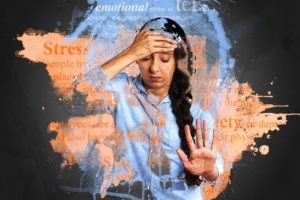 Perhaps the most important part of re-emerging from our “caves” now that the pandemic restrictions are lifting is reconnecting with friends and family. Many people have commented to me in recent weeks that they have come to a new understanding of the importance of relationships in their lives. Yes…. we can maintain our connections through our devices, but its not the same. We need the touch and the feel of others in our lives. We need the “in person” “relational field” if you will.
Perhaps the most important part of re-emerging from our “caves” now that the pandemic restrictions are lifting is reconnecting with friends and family. Many people have commented to me in recent weeks that they have come to a new understanding of the importance of relationships in their lives. Yes…. we can maintain our connections through our devices, but its not the same. We need the touch and the feel of others in our lives. We need the “in person” “relational field” if you will.
But what about the people in our lives who have “wronged” us in one way or another? What about the ex spouse who betrayed us, or the friend who let us down and hurt us deeply? In short…what do we do with people who we just “‘can’t forgive” In our own minds we may be thinking that what has been done to us is just “unforgiveable”. We may also believe that if we forgive it means we are agreeing to “forget”. (Hence the old adage “forgive and forget”) We don’t want to forget because it leaves us vulnerable and lets the other person “off the hook”. Ironically, the other “party” may not feel “on the hook” at all. This is all in our mind a good deal of the time
I’d like to suggest that a far better strategy for letting go of all the hurt and resentment we may be feeling about another person who has hurt us is to “forgive and remember.” Regardless of whether you ever want to see this person again, the “forgiveness “ is within us. It’s an active internal process which involves doing a clear eyed and honest inventory of what actually happened and then making a conscious decision to “let go” all of the anger and resentment that is so unhealthy for us in so many ways.
Here are some steps you can take to facilitate this process:
- Take some time to remember exactly what happened in as much detail as you can. If you are still holding a lot of anger, try to move to a more neutral perspective where you can ask yourself: Did I contribute in any way, large or small, to “co-creating” this situation? By “contributing”, this might even mean sticking around for the abuse, or being in denial about warning signs.
- If you are able to identify your “contribution” forgive yourself for whatever part you played. Have empathy for yourself for whatever you might have done to “land yourself” in this spot
- Once you can “forgive” yourself it becomes easier to forgive the other person involved. Perhaps you can find some empathy for this person and begin to understand their “side” of this story.
- Congratulate yourself for the strength of character it took to go through this process. Now you can feel in an empowered position where you can make a decision. Do I want this person in my life? Do I want this person to occupy space in my psyche? Its up to you. This person could be absolutely despicable and “toxic” to you on every level. But still…have you learned something? That in itself is valuable, so focus on that…rather than the person.
One final caveat to keep in mind: It never works to make your forgiveness contingent on the other person’s apology. (You may think they “owe you” an apology”) For one thing, they may never feel they need to apologize. For another thing, this means you are giving the other person power over your timing and your process. Take your power back.
So, come out of your cave. Embrace everyone you love. And maybe, just maybe this can also be the time to take a look at unresolved relationships from the past. You have the power to achieve resolution.









